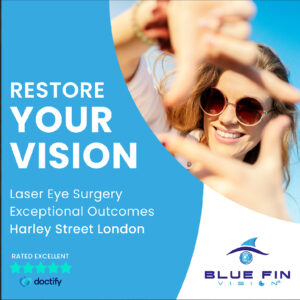Refractive Lens Exchange (RLE) is a transformative procedure that has gained popularity in recent years, especially among individuals seeking permanent solutions to their vision problems. It is a highly effective alternative to glasses, contact lenses, and even other surgical options like LASIK, particularly for patients whose refractive errors are outside the treatment range for laser surgery. RLE is most commonly performed on individuals over the age of 40 who are beginning to experience age-related vision changes, such as presbyopia, which makes it difficult to focus on nearby objects. However, it is also an excellent option for patients who are not candidates for LASIK due to factors like thin corneas, high degrees of nearsightedness, or irregularities in the shape of the eye.
One of the key benefits of RLE is its ability to correct a wide variety of vision problems. For example, individuals with high degrees of myopia (nearsightedness) or hyperopia (farsightedness) who are not suitable candidates for LASIK can benefit from RLE. The procedure is also effective for treating astigmatism, as the IOLs (intraocular lenses) used during RLE can be customized to correct for this condition as well. By replacing the natural lens with an IOL, RLE offers patients a significant improvement in visual clarity and quality of life, reducing or even eliminating the need for corrective eyewear.
The IOL used in RLE is chosen based on the patient’s specific needs and lifestyle. There are various types of IOLs available, including monofocal lenses, which provide clear vision at a single distance (usually either near or far), and multifocal or accommodating lenses, which offer a broader range of vision, allowing patients to see both near and far without Refractive lens exchange glasses. Multifocal lenses are especially appealing for patients with presbyopia, as they help restore the eye’s ability to focus at multiple distances, reducing the need for reading glasses or bifocals.

In addition to the advanced IOL options, the technology behind RLE continues to evolve, improving the precision and customization of the surgery. Surgeons use advanced diagnostic tools to map the shape and size of the eye, ensuring the IOL is positioned perfectly for optimal visual outcomes. This personalized approach helps reduce the risk of complications and enhances the likelihood of achieving clear, stable vision after surgery.
The procedure itself is minimally invasive and typically takes less than 30 minutes to complete. It is performed under local anesthesia, and most patients are awake during the surgery. The surgeon makes a small incision in the cornea, removes the natural lens, and replaces it with the artificial IOL. The incision is usually self-sealing, meaning stitches are rarely needed. Many patients experience significant improvements in vision within the first few days after surgery, although full recovery may take several weeks.
Post-operative care is crucial to ensure the best outcomes from RLE. After the surgery, patients may experience mild discomfort or blurry vision for a short period, but this generally improves as the eye heals. It’s essential to follow the surgeon’s instructions closely, which may include using eye drops to prevent infection, reduce inflammation, and promote healing. Most patients are able to return to normal activities within a week, though they should avoid activities that could put strain on the eyes, such as heavy lifting or swimming, until they have fully healed.
RLE also offers long-term benefits, particularly for older patients who are dealing with the natural aging of the eye. Presbyopia is a condition that can affect nearly everyone as they age, and by replacing the eye’s natural lens with an IOL, RLE can significantly improve the eye’s focusing ability, making it easier to see clearly at both near and far distances. Many patients find that they no longer need to rely on reading glasses or bifocals after undergoing RLE.
Despite its advantages, RLE is not without risks. As with any surgical procedure, there are potential complications, such as infection, retinal detachment, or an issue with the IOL positioning. However, these complications are rare, and the vast majority of patients enjoy improved vision after surgery. Surgeons will carefully evaluate whether a patient is a good candidate for RLE based on their eye health, age, and the severity of their refractive errors.
In conclusion, Refractive Lens Exchange is an innovative and effective solution for individuals seeking long-term vision correction. Whether you’re dealing with presbyopia or have a high degree of refractive error that can’t be corrected with LASIK, RLE can offer significant improvements in vision. It provides a permanent alternative to glasses and contact lenses and is particularly beneficial for patients over 40 who are experiencing age-related vision changes. With a wide range of customizable IOL options and a minimally invasive approach, RLE is quickly becoming a preferred choice for many individuals looking to improve their quality of life through better vision. By consulting with an experienced surgeon and carefully considering the procedure’s benefits and potential risks, patients can make an informed decision about whether RLE is the right solution for their needs.